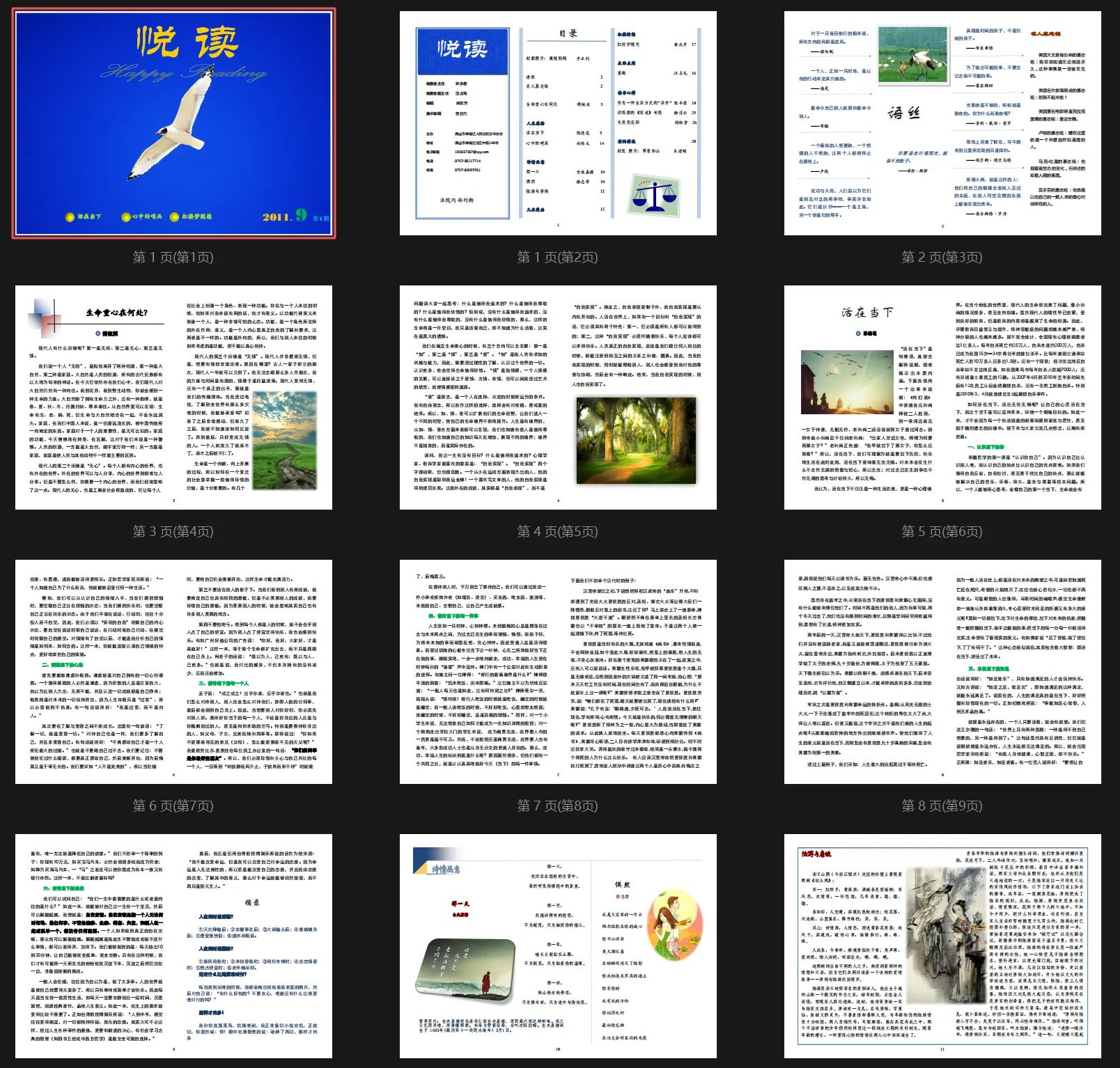First Issue of 'Happy Reading'

Most people have some misconceptions about non-professional or unfamiliar fields. For example, in the eyes of many, someone who studies computer science should be a jack-of-all-trades in computer hardware, software, programming, development, maintenance, and more.
I myself majored in law, with the official major code 030101, but occasionally, I have some proficiency in using computers. This often leads to misunderstandings, and I am frequently pulled into doing various perplexing tasks, such as the recent assignment to edit the internal magazine for my unit.
Regarding magazine production, I encountered it during my freshman year. At that time, to showcase some pictures and achievements of our class to the homeroom teacher, I used ZCOM, a relatively simple image magazine software. I vaguely remember that the final output was in an exe format.
Later, I often helped classmates with tasks like thesis formatting and image beautification, but these were done hastily without deep learning or training.
This time, being assigned the editing work left me completely clueless about where to start.
Initially, I thought professional typesetting software like Founder Feiteng would be required, which made me very reluctant to take on the task. However, when I first received the template from a colleague, I realized it was just a WORD document. This made the task much simpler.
After organizing the DOC document, I identified the following issues:

Abundant text content, few images, long articles, and low relevance among various contents
After much deliberation, I ultimately chose to use Publisher, which offers larger page sizes and more freedom in inserting elements, to produce this internal magazine.
Publisher is an optional component of the Office suite. While most people frequently use Word, Excel, and PowerPoint, they rarely pay attention to the less commonly used components like Access, Outlook, and OneNote. However, these tools can be quite effective when used occasionally.
The production process is no different from using WORD. The trouble lies in typesetting tens of thousands of words page by page, where it’s easy to misalign lines, words, or pages.
Below is the final result. Some images and articles were downloaded from the internet, intended for internal circulation only, not for external distribution. It is non-profit and should not cause excessive harm to copyright (if it feels uncomfortable, it will be changed immediately).
It’s worth mentioning that for embedding documents in web pages, my personal solutions include the following:
The preferred method is the one mentioned above: convert DOC documents to PDF format first, then convert PDF to SWF format (using SWFTOOLS), and use a FLASH player to view the document on the webpage.
a. The advantage of this method is that FLASH players are installed on almost all computers, allowing the document to be viewed directly on the webpage. PDFs can be converted to doc using OCR software or direct conversion tools, but converting PDF to SWF is irreversible, so there’s no need to worry about others copying your work.
b. The downside is that converting PDF to SWF can cause color distortion. This is acceptable for pure DOC documents like court judgments, but it can affect documents with complex color images.
Upload the document as an attachment:
The advantage is that it saves you the hassle, and it works for all types of files without worrying about webpage embedding. The downside is figuring out how to entice visitors to download the file and providing the necessary player.
Convert the document into images:
I have often used this method to upload long works on the intranet. By installing a screenshot tool on the browser, you can easily retain the webpage text format in images, eliminating the need for re-typesetting. The issue is that image display either requires inserting the image directly into the page and relying on the mouse or scroll wheel to browse, or using JS image controllers.
Directly embed DOC, PDF, and other files into the webpage:
On the intranet, this is an option since the company has developed IE-related ActiveX plugins, but it’s clearly difficult to achieve on the external network.
Rely on other website services to embed the webpage, as shown below:
Use services like Douban or Baidu Library to upload documents, which can then be easily embedded in webpages. The only downside is that these domestic websites require approval before publishing, which usually takes a long time, and the chances of approval are low. Below is a demonstration using Google Docs, but it seems to be blocked in China, so whether it can be viewed depends on luck.
